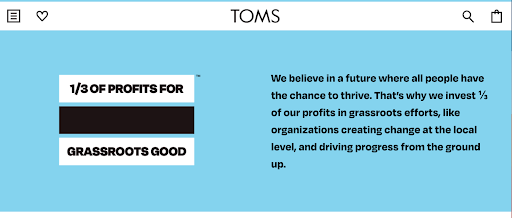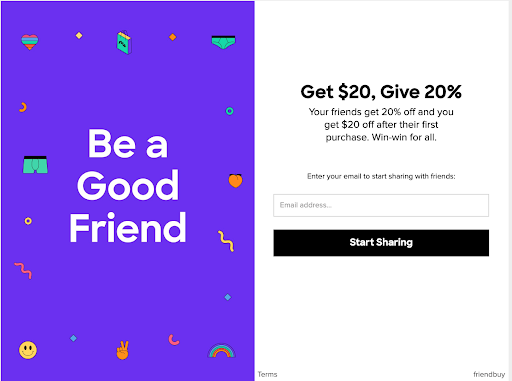Call Sales: +1 (833) 437-3835
Call Sales: +1 (833) 437-3835
Sarah Vancini | December 20, 2021 |

According to the Harvard Business Review, onboarding a new customer is five to 25 times more expensive than retaining a customer.
That means keeping customers coming back is one of the best ways to enhance your return on investment (ROI). In fact, if you are able to use a few simple customer retention tactics to increase your retention rate by five percent, you can grow your profits 25 to 95 percent.
Retaining customers is more financially viable than acquiring new clients because you do not have to expend as many marketing, sales and customer training resources in order to do it. As well, loyal customers are great ambassadors of your brand and will likely share their positive experiences with others.
Healthy customer retention makes every aspect of your business cost-effective and efficient. Find out how to calculate your customer retention and the top retention strategies below.
Ready to start improving your customer retention today? Request a free demo!
Before you can improve your customer retention, it helps to start with a baseline so you know what your retention rate is before you start making changes. Use the following formula to calculate your customer retention rate:
Retention Rate = ((CE-CN)/CS)) X 100
CE = The total # of customers when the period ends
CN = The total # of new customers that you acquired during the period
CS = The total # of customers at the beginning of a period
Example: you begin the quarter with 1,000 clients. You lose 200 during the quarter and gain 300. At the end of the quarter, you have 1,100 customers.
1,100-300 = 800 → 800/1,000 = .8 → .8 X 100 = 80 percent.
You may be wondering, "How do I know if my retention rate is good?" It depends on your business. You’ll need to consult industry benchmarks to find out how your retention rate stacks up against competition.
But no matter what your retention rate is there is always room for improvement. Check out these tips for how to improve your retention rate.
Most customers either abandon your business or become life-long loyal customers depending on their first experience with your brand. If a customer has a positive first experience, they’re much more likely to stick around.
The most common negative first experiences with products center around confusion about how to use them. To combat this, consider creating customer self-service tools like a product learning center, business academy or community forum. Your customers can use these to explore how-tos before reaching out to support teams.
You should always analyze customer sentiment and preferences to inform business strategy. But how do you elicit this feedback from your target demographic? You can do so through customer reviews and surveys.
If you have the bandwidth or the right partnerships, you can ask customers to participate in user testing or focus groups.
If not, there are a plethora of customer survey tools that can automatically collect and track insights. One of the most popular brand-loyalty metrics is Net Promoter Score®, or NPS.
NPS is very straightforward and easy to implement. The assessment simply asks “How likely are you to recommend [your company] to a friend?” Customers provide quantitative data by scoring their likelihood from 0-10. There is also space to provide qualitative in-depth feedback with text space below.
When customers provide any feedback, be sure you send a thank you message. This shows clients you are an active listener and really do value their opinion.
What happens when you get negative feedback? An angry customer may be a result of mistakes with your business strategy or implementation.
It’s important in these instances to apologize in your follow-up communications to try to keep the customer continuing to interact with your brand despite this bad experience. In fact, when your company is at fault, 96% of regular customers will continue buying from you if you apologize and fix the issue.
Some customers will love engaging and interacting with your brands. These are the customers who will fill out your surveys often and champion your company as an ambassador.
However, there are potentially loyal customers who are more introverted. They may need you to make the first move in conversation, and sometimes it takes a few tries. If customers haven't interacted with your brand for a while, you should reach out and re-establish your relationship.
To keep your brand engaging consider:
Be sure your communications are varied. 81% of customers say that trust is an important factor in purchasing decisions. Your company should be consistent in delivering value that uniquely resonates with your target demographic. If you’re just spamming clients with promotions and advertising, it’s hard to develop trust. Instead, you should be trying to develop an authentic relationship around the values of your brand.
For example, Toms shoes focuses 80% of their brand engagement activities on mission driven initiatives. Of great importance is the Toms “One for One” policy. For every pair of shoes that are purchased, it gives a pair to people in need, thus far donating over 60 million pairs of new shoes.
Your clients are focused on fulfilling their values. If your brand’s communication can center around the effects of their buying habits on things they care about, retention increases. 
As well, consider adopting a communication calendar to manage customer engagements and create opportunities to upsell and cross-sell. A communication calendar keeps track of customer communication and:
Coca-Cola used a communication calendar to keep track of their marketing efforts during their 70-day campaign at the 2012 Summer Olympics.
Organization was especially important because this campaign not only centered around product promotions, but also the launch of a new app, the "Coca-Cola Beat Generator.”
With their content calendar to keep them on track they were able to avoid potential launch hiccups and maximize the clarity of their messaging promoting both their products and the app. The campaign resulted in 16,500 visits to the web version and 1.78 million Facebook impressions
The top percentile of your customers spend much more than the rest of your customer base. But if a customer feels neglected, they’ll likely abandon your brand for a competitor.
To avoid this, be sure to reward your loyal customers for continuing to support your company. The more these customers purchase and engage with your brand, the more they should be rewarded.
Some loyalty reward ideas include:
MeUndies manufactures comfortable underwear. Their customer retention is leveraged by a great referral program. Customers are encouraged from their first transaction to refer a friend. Each referral gives the referring customer $20 and the referred customer 20% off their first purchase.
Interestingly, MeUndies uses their current customers to reduce cart abandonment. If a friend adds anything to their cart and abandons it before checkout, the referring person can use a “nudge” button to send an email reminder to the friend.

Companies should diligently track and analyze their retention rate, along with the reasons customers decide to churn.
By gathering customer data you can track preferences and trends in your target demographic to keep your current customers happy, create enticing reward and referral programs and troubleshoot issues with training or product as needed.
But how does raw data turn into customer insights and then into informed business strategy to improve retention?
Once you’ve gathered customer feedback, you should analyze your survey results by looking for trends in customer behavior and other areas to enhance user experience. Then, share this information with your team.
For example, product reviews should be distributed to engineers and development teams so they can address flaws in your product's design.
To help you with that, use a robust POS platform like Revel to store and analyze qualitative and quantitative feedback to better understand and reduce your churn rate and increase retention. Request a demo today.
Sarah Vancini is a marketing professional and founder of Stories with Substance, a marketing agency that provides marketing materials with a focus on product visualization to drive conversion.